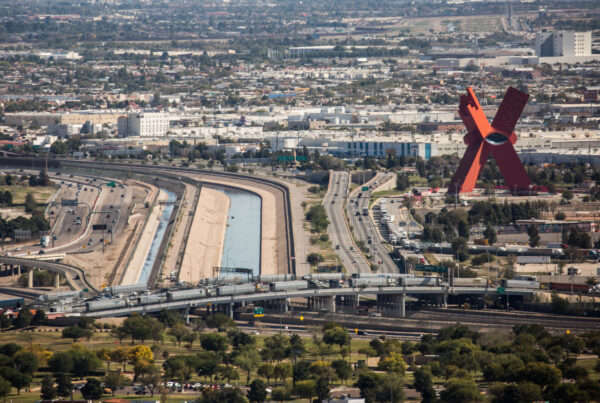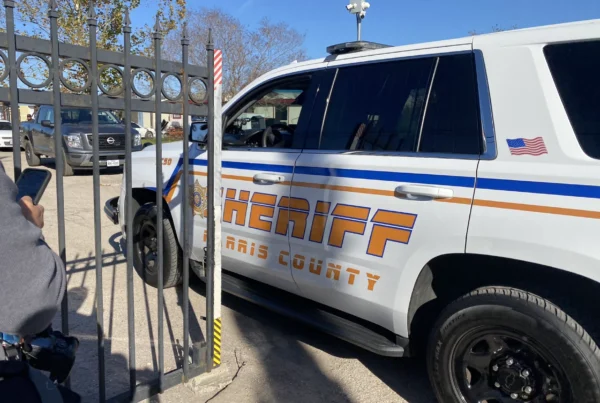From Texas Public Radio:
As the world marks the death of former President Jimmy Carter, many are reflecting on his accomplishments as a public servant and peace broker. Carter’s time in the White House left a lasting legacy in San Antonio.
On November 10, 1978, President Jimmy Carter signed legislation establishing the San Antonio Missions National Historical Park.
Former Congressman Charlie Gonzalez remembers that his father, Congressman Henry B. Gonzalez, worked closely with Carter on the project.
“My recollection of my father’s relationship with Jimmy Carter was one of profound admiration for the character of President Carter and, of course, his agenda. I think they were kind of kindred spirits,” Gonzalez said.
It might seem odd to reflect on, but there was controversy over the National Park Service taking over the four historic sites—Mission San José, Mission Concepción, Mission San Juan, and Mission Espada.
Gonzalez said there were questions if this was going to be a violation of the separation of church and state.
“Well, you know, it’s one thing to see what the government can assist the church in doing some things to maintain its historic presence in the community and recognizing separation of church and state — which my father was obviously a huge believer and proponent of,” Gonzalez said. “But nevertheless, there was a role for the federal government to assist in making sure that the missions were properly recognized and maintained, and so there was great advantage.”

U.S. President Jimmy Carter holds a young boy as he waves to a crowd in front of San Antonio’s historic Alamo during a campaign rally in San Antonio, Texas, Saturday, Nov. 1, 1980. The youngster is holding an Ojo de Dies, of Eye of God, believed by some to protect the home from evil when it is displayed.
Jim Wells / Associated Press
According to documents in the Carter Presidential Library, there were voices in the White House urging Carter to oppose adding the San Antonio Missions to the national park system because Catholic masses would be held in federally owned buildings, and this would set a dangerous precedent breaching the neutrality of the federal government.
Bob Lipshutz, a close adviser to Carter called it “questionable constitutionally” and “bad policy.”
But others have pointed out that the National Park Service has taken possession of multiple churches, including Boston’s Old North Church where Paul Revere’s lanterns were placed.
Allowing the missions to continue as local parishes was not negotiable by the San Antonio Archdiocese. Archbishop Furey refused to donate the missions if they could not continue as active Catholic churches.
Gonzalez said it was up to his father and fellow South Texas Congressman Abraham “Chick” Kazen to negotiate the deal.
“I think you have to respect the viewpoints of different people. But I, back then, of course, was with Congressman Kazen from Laredo, who had part of San Antonio, and my father, he saw the benefits. And Jimmy Carter would have been open to something that could maintain, preserve, and promote the historic nature of what the Missions represented, not just in Texas or San Antonio, but to our country.”
Still the political risks of making the missions part of the national park system gave some in the White House the jitters, according to another White House memo which framed it as a budget issue. The memo said taxpayers would recoil at hearing the federal government was going to spend nearly $40 million to restore Catholic churches.
And there were critics who complained these dollars would be better spent on preserving buildings directly connected to the American War for Independence.
In the end, Carter ignored these objections.
Carter’s decision was hailed by preservationists and historians. It ensured the long-term conservation of the structures, which had suffered centuries of neglect.
The move was seen as an acknowledgment of the multicultural roots of American history, highlighting the role of indigenous peoples, Spanish missionaries, and settlers in shaping Texas.
“Exceedingly big deal, and I like to think that may be the intervention of my father and Congressman Kazen and the cooperation of the administration — President Carter — who had a good relationship with dad, and dad really did admire him,” Gonzalez said. “So I think there were many benefits, but the nation benefited from people like Jimmy Carter, who had a true and sincere feeling for what was local in nature but served the national purpose.”
The missions are now a UNESCO World Heritage Site and continue to function as Catholic parishes.














